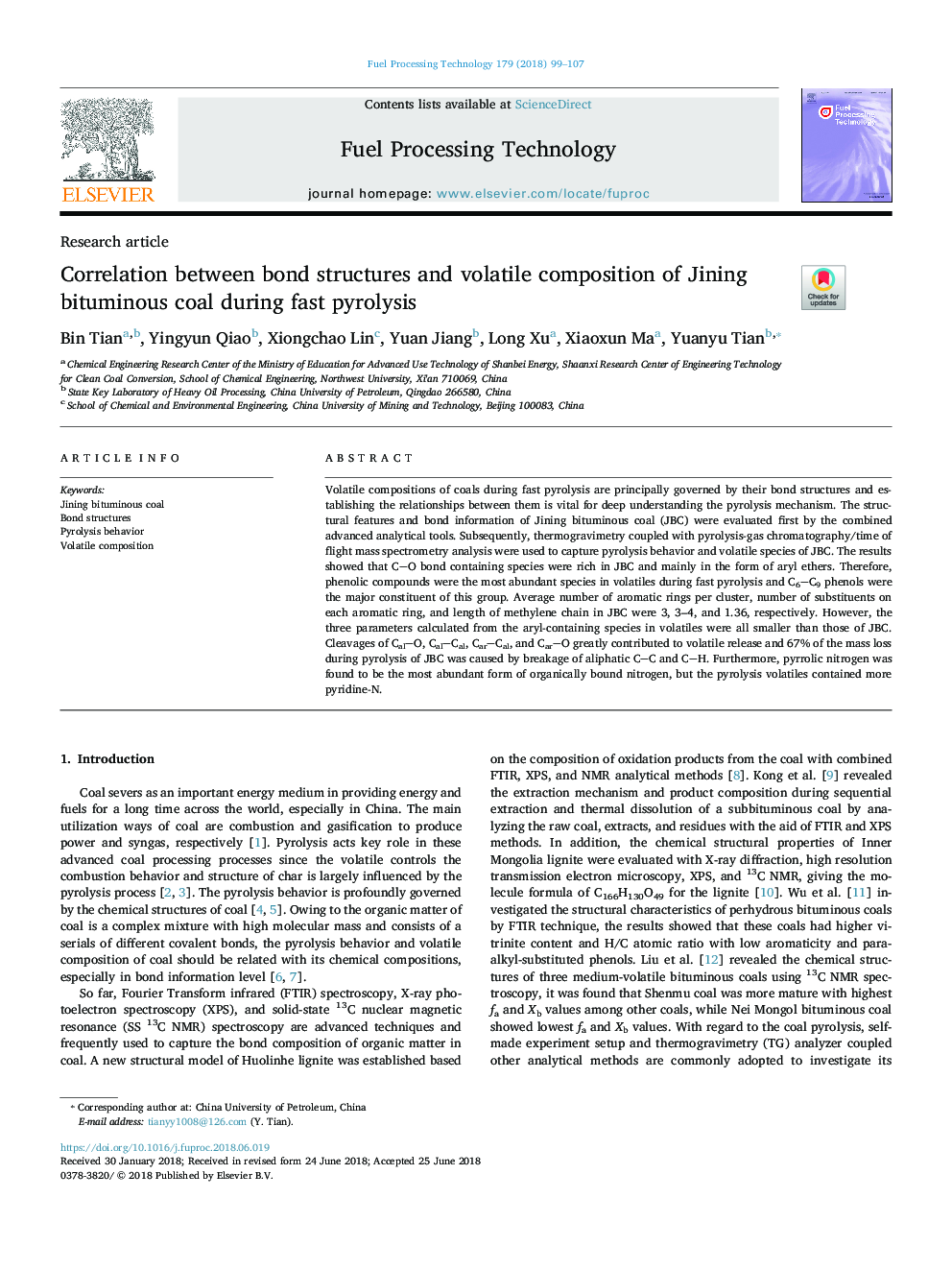| Article ID | Journal | Published Year | Pages | File Type |
|---|---|---|---|---|
| 6656264 | Fuel Processing Technology | 2018 | 9 Pages |
Abstract
Volatile compositions of coals during fast pyrolysis are principally governed by their bond structures and establishing the relationships between them is vital for deep understanding the pyrolysis mechanism. The structural features and bond information of Jining bituminous coal (JBC) were evaluated first by the combined advanced analytical tools. Subsequently, thermogravimetry coupled with pyrolysis-gas chromatography/time of flight mass spectrometry analysis were used to capture pyrolysis behavior and volatile species of JBC. The results showed that CO bond containing species were rich in JBC and mainly in the form of aryl ethers. Therefore, phenolic compounds were the most abundant species in volatiles during fast pyrolysis and C6C9 phenols were the major constituent of this group. Average number of aromatic rings per cluster, number of substituents on each aromatic ring, and length of methylene chain in JBC were 3, 3-4, and 1.36, respectively. However, the three parameters calculated from the aryl-containing species in volatiles were all smaller than those of JBC. Cleavages of CalO, CalCal, CarCal, and CarO greatly contributed to volatile release and 67% of the mass loss during pyrolysis of JBC was caused by breakage of aliphatic CC and CH. Furthermore, pyrrolic nitrogen was found to be the most abundant form of organically bound nitrogen, but the pyrolysis volatiles contained more pyridine-N.
Related Topics
Physical Sciences and Engineering
Chemical Engineering
Chemical Engineering (General)
Authors
Bin Tian, Yingyun Qiao, Xiongchao Lin, Yuan Jiang, Long Xu, Xiaoxun Ma, Yuanyu Tian,
